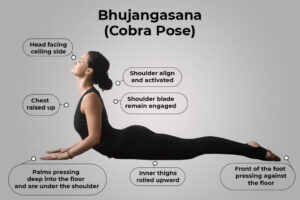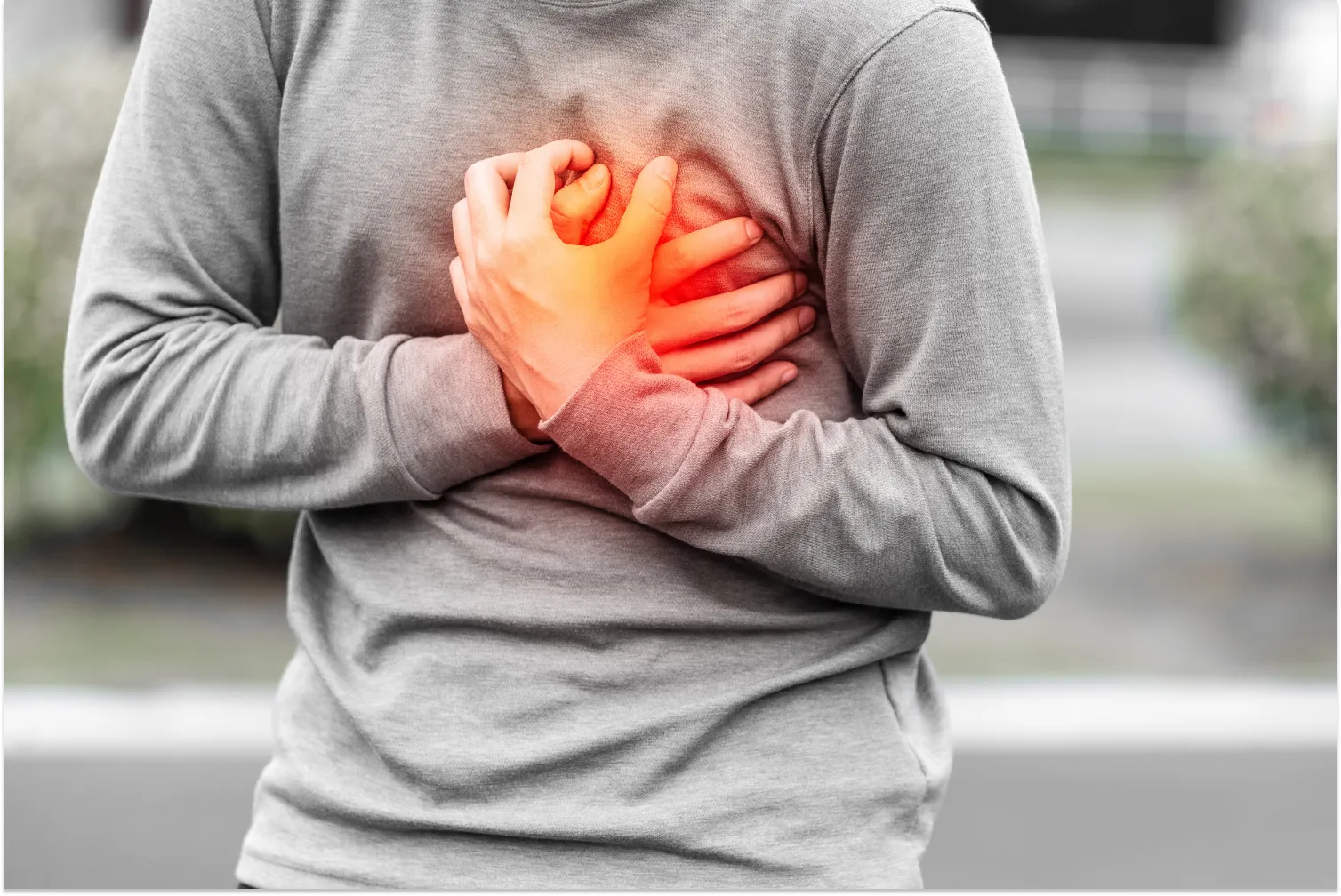Signs, Causes, Management, and Avoidance
A Handbook of Heart Attack: An essential part of general wellbeing is heart health. It can save lives to recognise the early warning signs of a heart attack, understand its symptoms, and know how to react. Everything from heart attack symptoms and therapy to yoga for heart health, heart attack home remedies, and recovery and prevention food suggestions are covered in this guide.
A Heart Attack: What Causes It?
An obstruction of supply of blood to the your heart, typically brought on by an accumulation of fat, cholesterol, and other materials creating a plaque in the arteries, results in a heart attack. A blood clot occurs when the plaque bursts, obstructing blood flow. Among the most frequent reasons for a heart attack are:
- Conditions of the coronary artery system (CAD)
- Increasing blood pressure
- Elevated cholesterol levels
- Tobacco use
- The state of being obese
- A sedentary way of life
- Diabetes mellitus
Preventing and healing from a heart attack starts with knowing why you have one.
Initial signs of a Heart Attack
It’s necessary to recognise the signs of a heart attack. Although each person experiences signs a different way, the following are the most typical ones:
- Chest discomfort or pain frequently characterised as fullness, tightness, or stress
- Breathlessness
- Sweat that is cold
- Vomiting or feeling queasy
- dizziness
Men are more likely to have certain heart attack symptoms, such as chest pain, although women may show less obvious symptoms.
Early Heart Attack Symptoms
Hours or even days before the actual event, the early warning signals of a heart attack may manifest. Among these warning indicators are:
- Weariness
- indigestion
- Disturbances in sleep
- little soreness in the chest
- Restlessness or anxiety
Early detection of the warning signals of a heart attack can result in better results and faster medical intervention.
Women’s Heart Attack
Women’s heart attacks frequently manifest differently than men’s. In place of severe chest discomfort, women may feel:
- Unusual weariness
- Feeling queasy
- Breathlessness
- Pain in the upper back, shoulders, or jaw
- Lightheadedness
Women are more prone to mistake heart attacks for other medical conditions due to these particular symptoms.
Heart Attack in Silence
A silent heart attack may show up as modest symptoms like indigestion or weariness, or it may show no symptoms at all. Until heart damage is discovered by a subsequent ECG, many patients are unaware that they have had one. Even though these heart attacks are “silent,” they can still be fatal and, once detected, need to be treated right once.
The differences between cardiac arrest and heart attack:
- A blocked artery is the cause of a heart attack, which is a circulation issue.
- An electrical issue called cardiac arrest occurs when the heart abruptly stops beating.
Although they are similar, heart attacks and cardiac arrests require somewhat different treatments.
First Aid for Heart Attacks
First aid for a heart attack can save a life. The following are the necessary steps:
- Make an instant emergency service call.
- Remain composed and assist the person in sitting down.
- Unfasten tight garments.
- Give aspirin if the patient is conscious and not allergic.
- If you are trained, start CPR if they stop responding.
Applying first aid and responding promptly to heart attack symptoms can mean the difference between life and death.
Treatment for Heart Attacks
Treating a heart attack as soon as possible is essential and may involve:
- Medications such as thrombolytics, nitroglycerin, and aspirin
- (to unblock clogged arteries) Angioplasty
- Surgical to bypass the coronary arteries
Following emergency care, medicines, lifestyle modifications, and maybe cardiopulmonary rehabilitation are all part of long-term heart attack recovery.
Recovery after a Heart Attack
Recovery from a heart attack happens gradually. It consists of:
- Rest and cardiac rehabilitation
- Changing to a diet for heart attacks
- Stress management
- Exercise under supervision
- Frequent health examinations
Incorporating yoga into heart attack treatment can also help with physical endurance and me
Symptoms of a mild heart attack
A person may occasionally have mild heart attack symptoms like:
- A little soreness in the chest
- Weariness
- Lightheadedness
- Feeling queasy
Risk Factors for Heart Attacks
The chance of having a heart attack can be raised by a number of heart attack risk factors:
- Age, particularly for women over 55 and males over 45
- Heart disease in the family
- elevated blood pressure
- elevated cholesterol
- Smoking
- Diabetes
- Absence of exercise
- Anxiety
Being aware of your individual heart attack risk factors aids in early detection and prevention.
Ways to Avoid Heart Attacks
Making lifestyle adjustments is one way to prevent heart attacks. These include:
- Frequent physical activity
- Consuming a diet that is heart-healthy
- Staying away from tobacco
- Stress management
- Having routine health examinations
Diet for Heart Attacks
A diet for heart attacks should emphasise:
- Vegetables and fruits
- Whole grains
- Lean proteins
- Good fats (such as those found in avocados and almonds)
- Foods low in sugar and salt
What foods are good for people who have had heart attacks? Choose heart-healthy foods like:
- The muesli
- Greens with leaves
- Berries
- Fish high in fat, such as salmon
- Legumes and beans
This type of diet promotes healing and keeps heart attacks from happening again.
Natural Treatments for Heart Attacks
Although they can’t replace medical care, home cures for heart attacks can help control risk:
- BP and cholesterol are lowered by garlic.
- Curcumin, an anti-inflammatory compound, is found in turmeric.
- Hawthorn: Promotes better circulation and cardiac strength.
- Supplemental omega-3: Support heart health.
- Reduces LDL cholesterol: Green tea.
Before beginning any home treatments for a heart attack as part of your recuperation strategy, always get medical advice.
Yoga for Heart Health
The main goals of yoga for heart health are circulation and stress reduction. Positions like:
- Tatasana, or the Mountain Pose

- Sukh asana (Simple Pose)

- The Cobra Pose, or Bhujang asana

- Bandh asana Setu (Bridge Pose)

Because these poses enhance oxygen flow and soothe the mind, yoga for heart health is an important component of both preventive and rehabilitation.
Yoga for Recovering from Heart Attacks
Yoga for heart attack recovery should be gentle after a heart event. Under medical supervision, restorative yoga techniques can help with:
- Reducing blood pressure
- Improving mental health
- Increasing strength and flexibility
For cardiac patients, regular yoga practice helps build a more robust and durable circulatory system.
Preventing Cardiovascular Disease with Yoga
The following are some ways:
- Lowering cholesterol
- Managing blood sugar
- Reducing stress
- Enhancing the quality of sleep
Yoga is more than simply therapy for heart patients; it’s a long-term wellness way of life that promotes heart health.

